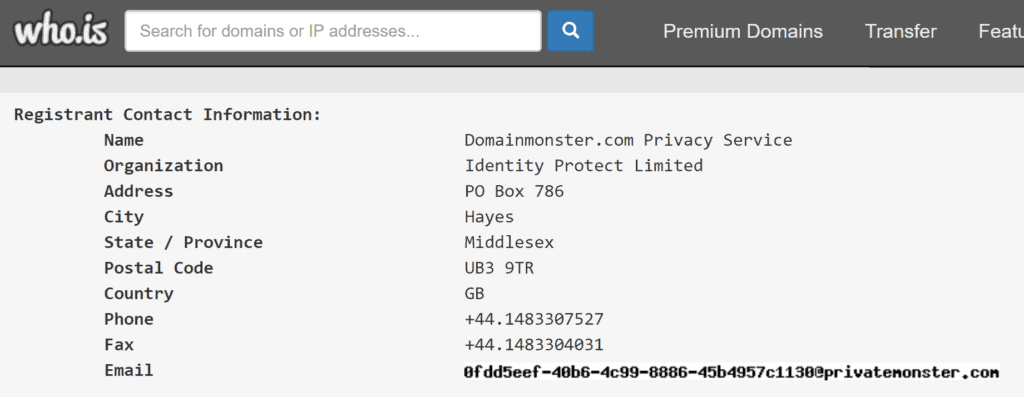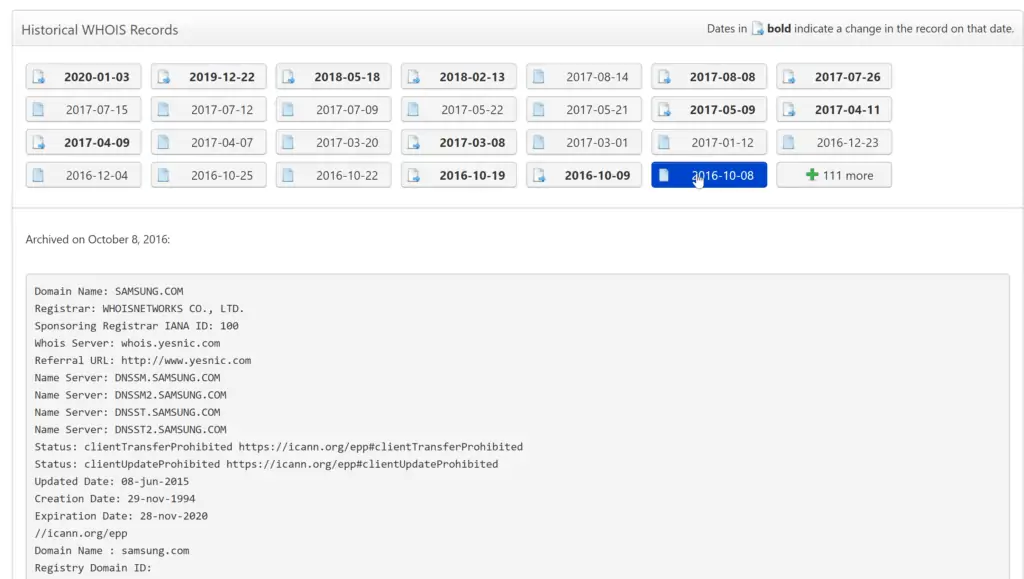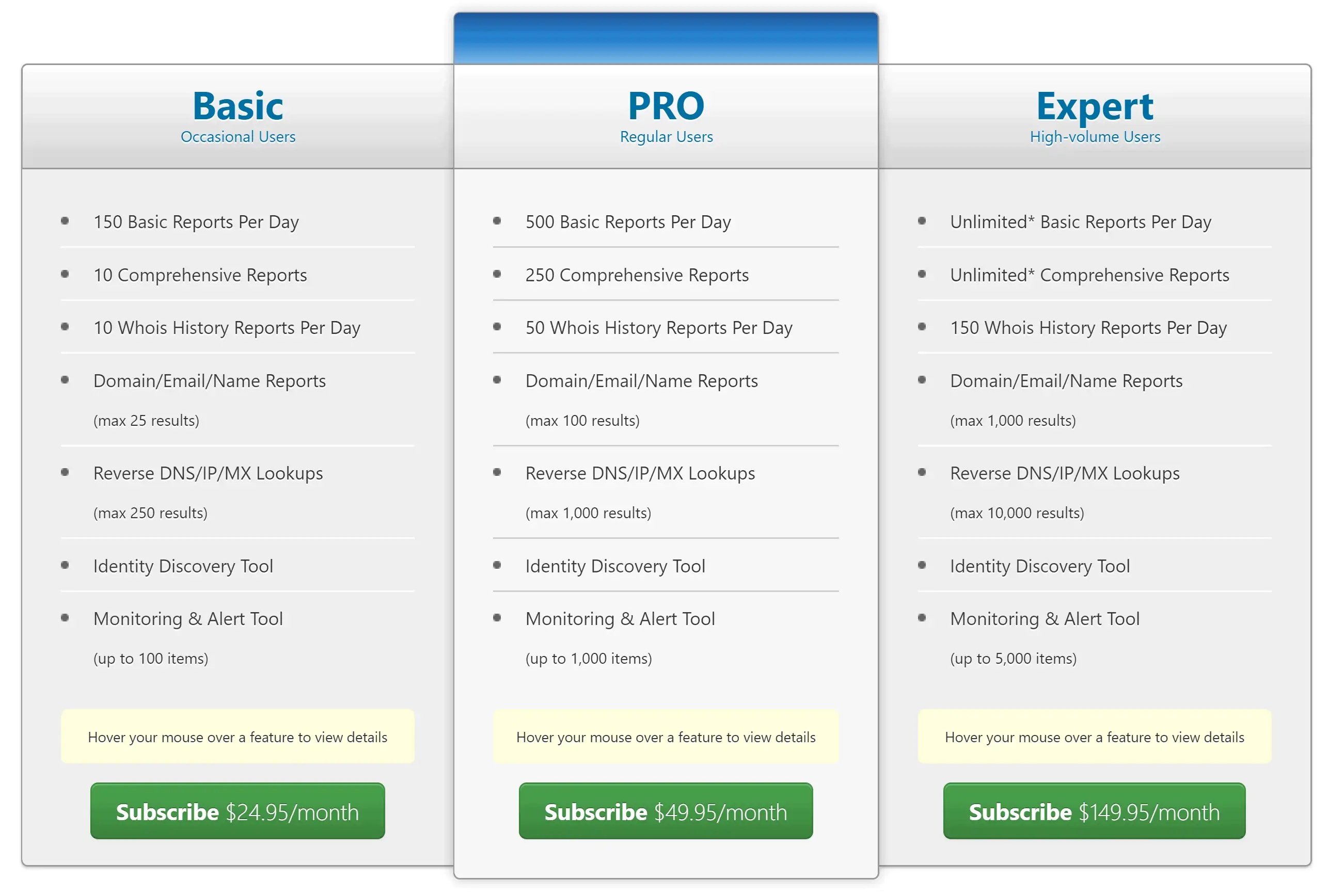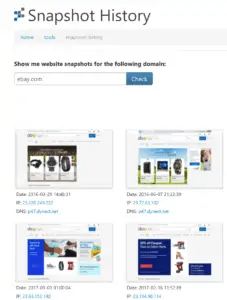The web & the internet are constantly changing. If there’s one thing that stays true though, it’s that domain names become rarer & rarer. Voice.com sold in 2019 for $30 million; CarInsurance.com still holds the public record at just under $50 million (a life changing amount, many times over), and the chance of finding a one word .com available to register is basically nil (other than inventing a new word).
Even domains you’d expect to be available are invariably owned already. If you’re looking to set up a new website or business therefore, there’s often a need to find out who owns a domain & try to purchase it from them.
A few years ago, that was fairly easy: Go to a whois tool, input the domain, and quite often you’d be told who owned it. Over the years 2 things have changed there:
- Domain privacy tools have become more popular.
- GDPR spooked most registries into hiding the ownership information.
Since GDPR, that’s become a little harder.
Free Methods For Finding a Domain Owner
The Website
First of all, there’s the website itself, if active.
The three most obvious places on a site you’d find info about the owner would be:
- Contact us page.
- Privacy policy.
- Terms & conditions.
Even where privacy policies & Ts & Cs pages don’t directly reference the owner, there are sometimes clues: Company numbers, Ltd Company names, etc. And – failing that – copying & pasting a whole privacy policy or Ts & Cs page into google, or unique sentences from that, can show up other sites using the same policy. (this may sound farfetched, but we’ve used it successfully before).
Less visible sources of info direct from websites include:
- Source code – information directly included.
- Robots.txt file – these occasionally contain info about the owner, usually visible at www.examplesite.com/robots.txt
- Source code – Google Analytics ID
- Source code – Google AdSense ID
In the case of the latter two, looking for the Google Analytics ID in the source code, and then pasting that into Google, occasionally shows up other sites using the same ID.
Off-site, there are also places where you can often find info. Most notably, Google itself. Some less obvious ways of using Google to find the owner of a site include:
- Do a “site:examplesite.com email” search, and a “site:examplesite.com phone”, and a “site:examplesite.com contact” search, which sometimes shows up email addresses or phone numbers on pages that aren’t obvious to find via the site itself, but have been picked up by google.
- “www.examplesite.com” as a search sometimes shows up other sites referencing it. In some cases these will contain contact details.
Whois Tools
While not as useful as they once were, public whois information providers often still contain clues. For example, here’s a listing from ‘who.is’:

At first glance that’s quite useless – a PO Box, a UK phone number, an obscured email address. But – if the domain owner has set things up correctly – it’s occasionally possible to reach them through those.
Archive.org
The ‘wayback machine’ at http://web.archive.org/ can sometimes be useful for hunting down domain owners. Browsing back through old versions of a website sometimes either gives contact info directly, or at least a clue. On one occasion I managed to track down a domain name owner by finding an old version of the site on web.archive.org, contacting the owner at that point, and them providing me with the info of who they’d sold the domain on to.
Twitter Search
If the website has a blog, sometimes the blog owner will be the first person to post the URL on Twitter. Therefore, grab a couple of blog posts, and put their URLs into Twitter search, and scrolling to find the very first mention of the URLs can occasionally trace you back to the owner.
Twitter’s ‘advanced search’ tools make this a little easier (https://twitter.com/search-advanced) – these allow you to do things like search by date range (eg. to narrow to the time at which a particular post was posted), hide replies, and more.
Social Bios
Another source is social media bios. If someone’s actively using the domain, they may have it listed on their social profiles. Twitter above is one example, but there are of course many more. Google site searches are often the easiest way to track these down. For example, google each of the following patterns:
- Site:twitter.com exampleurl.com
- Site:instagram.com exampleurl.com
- Site:facebook.com exampleurl.com
A Paid Tool for tougher to find info: DomainIQ
Whether you’ve hit a brick wall, or you’re simply happy to pay to take a shortcut, or this is a problem you hit regularly & the time saving and extra info is worth it, our favourite paid domain hunting tool is DomainIQ.
DomainIQ is a tool from Intelium Corp (who also own ‘dropping.com’, the tool for finding out which domain names are going to become available in the short term, ‘estibot.com’, the domain name valuation tool, and various other valuable tools).
DomainIQ offers a huge range of features aimed at helping you to find out who owns a particular domain, or which domains a particular person owns.
Here’s an example of two of the primary features of the tool. Firstly, the core ‘overview report’ for a domain (we’ll use Samsung.com as an example):

Clicking on any of the highlighted links there leads through to a further report showing more detail. For example, clicking the ‘2,141 related domains’ link shows you the other 2,000+ domain names owned by Samsung.
You can also see there at the top, the tabs ‘Portfolio’, ‘Whois’ (which shows the current whois info), ‘Whois History’ (which shows a list of historic snapshots of the domain’s whois), and ‘Related Domains’.
‘Whois History’ is perhaps the most useful of those. Here’s an example:

Clicking any of the dates there shows you what the whois info looked like at that point. As you can see, there are 111 more snapshots prior to the ‘2016-10-08’ entry. Those go right the way back to 2009 in this case, but many domains go back to 2004.
Obviously the example we’ve used is Samsung, but in the case of a privately owned domain this can be extremely useful for finding out who owned the domain in the past, or simply for searching back prior to a domain falling under a privacy protection system.
Aside from the above, the core set of features is as follows:
- Basic Reports – these show you which email address & registrant owns a particular domain name. You can also use that to search which other domains they own.
- Comprehensive Reports – These show you who owns a domain, email address, registrant info, and also summarise which other domains are owned by a registrant directly within the report. They also offer a ‘whois history’, showing changes to the domain over time. And they show a ‘related domains’ report, letting you know which others domains are associated even when not explicitly owned by the same registrant.
- Whois History – as above, this shows you data back to 2004 of ownership history. This is sometimes useful where a registrant has used a very effective domain privacy tool at some stage in the past, but had a visible ID before then.
- Domain/Email/Name report – search by a person or company to find out which domains they own.
- Reverse DNS – see all domain names on a particular server, or network class, or by DNS.
- Identity Discovery Tool – this checks whois records, IPs, servers, and subnets to find out who owns a domain. It also allows you to check by Google Analytics ID and Adsense ID.
- Monitoring and Alerting – If you’re interested in a particular domain to the extent you want to know whenever something changes, this function alerts you whenever that happens. You can also use this for particular keywords (useful for brand monitoring, for example).
Most of these features are available with every level of access, but with limitations around how frequently you can use them:

Outside of these core features, there are also many others. For example, the ‘Snapshot History’ tool has a database of historical snapshots for most websites over a certain size. This is sometimes useful for seeing older versions of sites, from which you can sometimes get contact info:

There’s a ‘bulk snapshot’ tool that accompanies that, for those who want to snapshot hundreds of sites or pages regularly.
There’s also a ‘hosting history’ tool that allows you to see the historic hosting of particular domains. Again, that’s sometimes useful in tracking down an owner: When they’ve hosted a site in the past on a server alongside their other websites, you can often use that to track down their contact info (quite common where a domain name has fallen out of use, but the owner still has several live sites on a domain where it used to be hosted).
Overall, DomainIQ is extemely useful and we’ve successfully used it to track down the owners of many domains.
You can register for DomainIQ here, or find out more info about DomainIQ over here.
